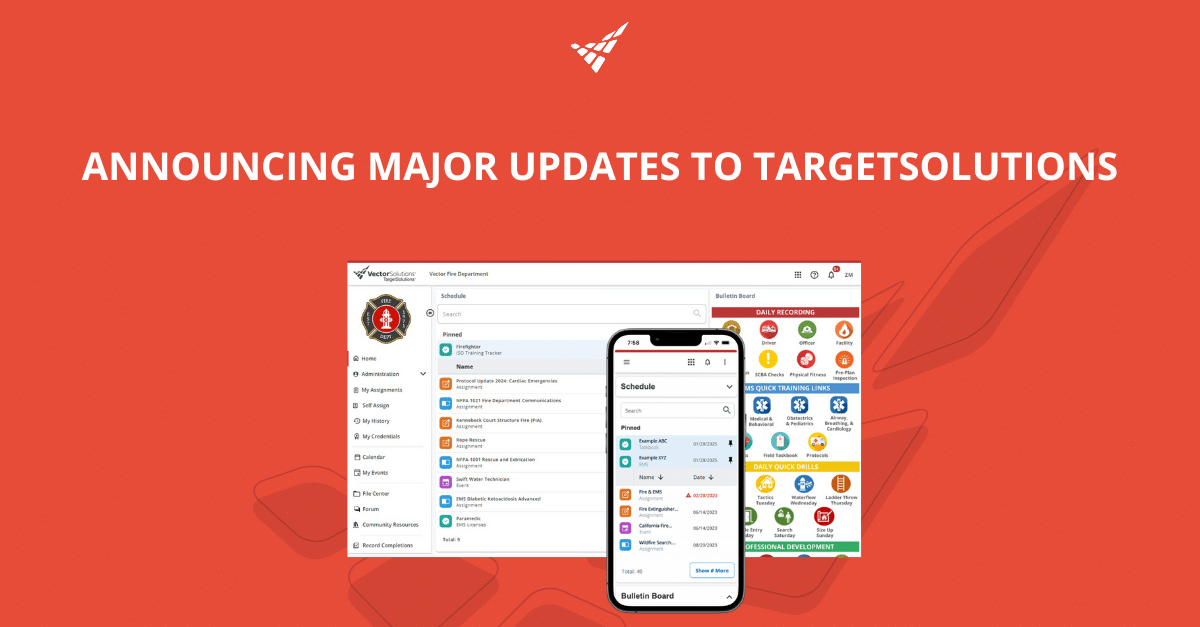December 30, 2024 7 min read

Upleveling Law Enforcement Academy and In-Service Training in 2025: Accountability, Outcomes, and Innovation
Industry:
Solution:

The first half of the 2020s has seen the law enforcement landscape go through dramatic and rapid transformation. Agencies and certifying authorities have incorporated new ideas and best practices, often proactively but also at the behest of local communities or state governments.
An area of particular focus has been training, both at the academy and in-service. Between the innumerable laws passed by state legislatures and the mandates put forth by state certifying authorities, the training offered at academies and by local agencies has undergone significant updates, often year-over-year. In some cases, the changes have been implemented and then walked back as states find the correct balance between accountability, transparency, and what is actually feasible for agencies to manage.
As such a foundational element of officer success, it’s imperative that the training offered by agencies reflects these new best practices. However, it’s also important, for both the agency as well as the authority mandating the changes, that the impact of the new training efforts is measured. Without that data, it’s impossible to tell if the training is truly helping officers in the field or if additional fine tuning is needed to ensure the best possible outcomes are reached, for both officers and their communities.
As a result, agencies across the nation, big and small, are looking for law enforcement software, tools, and methodologies to help them integrate the changes that have already happened, stay on top of new developments as they emerge, and more effectively analyze and record the outcomes of new training efforts.
The Training Lifecycle – From Academy to In-service
Typically, a new recruit undergoes basic academy training, field training at their employed agency, and then following their successful field training completion, in-service training on a periodic basis. As is common in law enforcement, the exact process and procedures will depend on the state and particular agency, but those three generally be considered the major building blocks that define the training process for law enforcement officers in the United States.
While each stage comes with its own specific challenges, there are commonalities: budget and resource constraints, new and evolving requirements or mandates, and difficulty evaluating and tracking the efficacy of the training.
- Budget and Resourcing
Doing more with less is a common theme across all law enforcement operations, not just training. Agencies are expected to provide more services to their communities but are often not provided with the budget or staffing to do so effectively.
Additionally, ongoing staffing shortages continue to plague agencies around the nation. While a recent Police Executive Research Forum survey did show an encouraging increase in the number of total sworn officers among respondents at small and medium agencies, large agencies continue to report staffing challenges. To combat these staffing shortages, agencies are rushing to hire new officers, and as a result, hiring is up across the board. However, resignations are offsetting the impact of these efforts, with 28.6% more resignations at responding agencies in 2023 than in 2019.
- Evolving Requirements
No two states have approached the public’s calls for police reform the same. Some have passed sweeping reform bills and others have taken a more piecemeal approach, passing individual laws for each area of focus. Adjusting to so much change in such a short period of time, amending policies and procedures to match new requirements, and providing training that incorporates these evolving standards has and will continue to put strain on agencies and academies.
While the rate of change and fervor of the public may not be the same as it was earlier in the decade, new technologies and public scrutiny will continue to motivate legislators to write and pass legislation that impacts the operations and training of law enforcement officers at the academy and in-service.
In particular, the rise of AI, facial recognition software, and usage of drones have all been areas of focus amongst legal experts and lawmakers for their potential and current use by law enforcement. As laws are passed, even if they don’t set forth new training requirements, agencies must update policies and educate officers, emphasizing the need for comprehensive training tools and effective methodologies.
- Evaluating the Impact of Training
As previously stated, effectively measuring and tracking the impact of newly implemented training activities continues to be a challenge, not just for agencies but also for legislatures and state certifying authorities.
While the science and methods of study to determine positive or negative impacts of training continue to evolve, agencies and academies can help speed along the gathering of data by incorporating tools that make tracking and reporting training data easier, such as training management software and academy automation tools.
New Innovations in Academy Training Operations
Like other areas of public safety, tradition plays an incredibly important role in law enforcement. From ceremonial practices to core principles like honor, integrity, and service, tradition helps instill a sense of pride and belonging among officers.
However, admiration for tradition should never come at the cost of innovation. For law enforcement academies, this means respecting the past while also being proactive about searching for new and better ways of doing things. Afterall, the most successful academies don’t wait for a problem to fester before looking for a solution.
Moving away from paper, spreadsheets, and other manual ways of managing training has been one of the easiest and most effective ways for academies to quickly revolutionize their operations. The Acadis® Readiness Suite is one such tool, providing academies with automation software that is highly secure and designed for public safety training and compliance operations.
“It’s all entered into Acadis and that becomes the single source of truth for their training record. The cadets we have today will never have a paper file in a filing cabinet somewhere.”
Lieutenant, Training Operations Supervisor
Louisiana State Police
After the Academy – What’s Next?
Following their graduation from the academy, the local agency will typically be responsible for an officer’s ongoing training, though this can differ based on state and location. However, even when in-service training is 100% the responsibility of the local agency, the academy plays a pivotal role in setting new officers up for long-term success.
The importance of academy training has led to a recent re-examining of training strategies and the incorporation of to improve learning and information retention among cadets.
One such effort is the Academy Innovations research study, which examined whether traditional instruction or an integrated approach, where students received supplemental instruction over a period of intervals, was more effective at helping officers retain knowledge over time. Additionally, of the four groups, two received only in-person classroom instruction and the other two received initial in-person instruction and then were also provided supplemental instruction online.
At the end of the study, it was found that online training provides significant time savings with only a nominal impact on testing scores.
These results demonstrate the efficacy of tools like police training software and online training to help agencies and academies save time without negatively impacting the training experience provided to officers.
Get More from Industry Experts in 2025
We’re excited to announce a 2025 webinar series showcasing insights from our partners in law enforcement and other industry experts. The series will culminate in a presentation on Tuesday, June 3rd at the IADLEST Conference 2025, held in Charlette, North Carolina.
Over the course of the series, we’ll share additional information on the subjects discussed above and provide attendees with actionable insights to take back and implement at their academy or agency.
We hope to see you there! Click the button below to register and for more information!
Uplevel Your Peace Officer Training: From Academy to Active Duty
Register Today
Vector Solutions’ suite of industry-leading software solutions includes training management systems, online training courses, FTO and live skill evaluations, academy automation, equipment and inventory management, shift scheduling, and an early intervention and conduct management system.











